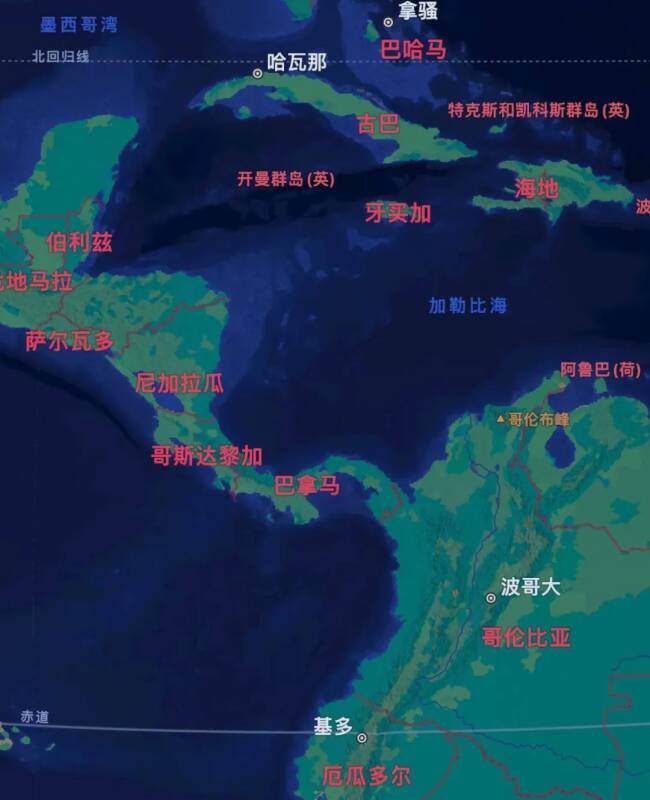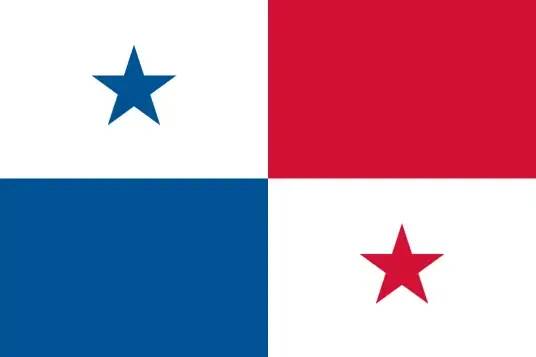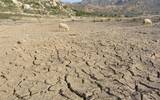Panama| Introduction to Rose Coffee Beans in Poquet Coffee Region
Panama Panama
In the southernmost part of Central America, there is a country with a special geographical location, in which the canal is known as the "bridge of the world", that is, the Republic of Panama (The Republic of Panama). The country has a total area of 75517 square kilometers and is divided into 10 provinces and 5 Indian neighborhoods.

The national flag is rectangular, and the face of the flag is made up of four rectangles of white, red and blue. White symbolizes peace, red and blue represent the liberals and conservatives of the former Panama, respectively, and they are also symbols of the two parties' United struggle for national interests. The blue star on the white background at the top left represents loyalty and integrity, while the red star on the white background at the lower right represents the authority of the law. The design in which the cross is divided into four pieces represents the border of Panama in North America, South America, the Atlantic and the Pacific.

Panama is bounded by Colombia in the east, the Pacific Ocean in the south, Costa Rica in the west, the Caribbean Sea in the north, the S-shaped territory connecting North and South America, and the Panama Canal connecting the Atlantic Ocean and the Pacific Ocean from north to south, so it has the name of "bridge of the world".
The whole territory of Panama is undulating, with vertical and horizontal valleys, mostly mountains except the north and south coastal plains. Because the ground is near the equator, it is a tropical maritime climate, humid during the day and cool at night, with an annual average temperature of 23-27 °C, drought and rain in two seasons, and an average annual rainfall of 1500-2500 mm. Panama has many volcanoes, rich forest and river resources, as well as a unique microclimate, making it ideal for growing crops such as coffee.
Coffee producing area
Coffee producing areas are mainly divided into Boquete, Volcan-Candela and Renacimiento. These producing areas are located in the western part of the country and are surrounded by three volcanoes: Volc á n Baru of Baru, El Valle of Erbaye and Le Yeguada of Raye Guada.
Boquete: Pocket is arguably the most famous coffee producing area in Panama, because it has many well-known estates, such as Emerald Manor, Duncan Manor and Arida Manor. Its main Bokui special area has excellent conditions for growing coffee. Coffee is grown at an altitude of 1200-2000 meters, where the temperature is between 11 ℃ and 27 ℃, which is not too cold or too hot. At the same time, a large temperature difference can make the coffee fruit grow slowly and develop its flavor. In addition, there is an appropriate amount of rainfall, fertile land brought by volcanic ash, ample sunshine and special local microclimate. So that the producing area can produce high-quality coffee.
Walken (Volcan-Candela): Poquet is better known than Walken, but in recent years, there have been a number of good estates in Walken that have shown up at the recent BOP competition in Panama and achieved good results. The Walken producing area is located to the west of Mount Baru, at an altitude of 1200-1600 meters. Although the average rainfall is less than Pokuit, the same high altitude and fertile volcanic soil give coffee trees a good growing environment. At present, in the Walken producing area, there are well-known 90 + Rosa Manor, Aurora Manor and Hartman Manor.
Renacimiento: this production area is located in the most marginal area of the country, bordering Costa Rica, and is planted at an altitude of 1100-1500 meters. Because of its remote location, inaccessible location, and reduced processing and transport infrastructure due to remoteness, Renento is not as well known as the Poquet and Walken producing areas.
Geisha variety
The rose variety was first introduced in Ethiopia in the 1930s, then introduced to Tanzania in 1936, introduced to Costa Rica in 1953, and not introduced to Panama from Costa Rica until 1970, but at that time, quantity was not sought after, and the branches of rose plants were relatively thin, so they were not favored by farmers and were not widely planted. Later, the wave of boutique coffee made people begin to pay attention to the flavor and quality of coffee beans. In 2005, the Jade Manor used the rose summer variety to participate in the BOP competition, which became famous for its delicate floral, jasmine, peach, bergamot and unusually high scores.
Qianjie Coffee Panamanian Pokuit Rose Summer Coffee production area: Pokuit production area altitude: 1600 m Variety: Rosa treatment: daily washing Flavor: Jasmine Lemon bergamot Honey Green Tea
This Panamanian Poquet Rosa Coffee beans from Front Street Coffee are washed and moderately roasted. In front of the street, the use of V60Grad 15 ratio, 92 ℃ cooking, will smell jasmine, the entrance will be lemon-like acid, bergamot, honey flavor, green tea-like taste, refreshing taste.
Important Notice :
前街咖啡 FrontStreet Coffee has moved to new addredd:
FrontStreet Coffee Address: 315,Donghua East Road,GuangZhou
Tel:020 38364473
- Prev

Drink it and go to lavage your stomach?! "Physical examination artifact" contains excessive caffeine
▲ Click to pay attention| Daily Boutique Coffee Culture Magazine Coffee Workshop Recently, a certain caffeine drink has been frequently reported by the media. As the annual "sports high school entrance examination" has begun across the country, parents have collected various "outside the high school entrance examination" recommended on the platform in order to allow students who have neglected to exercise to perform well during the examination.
- Next

Level 2 drought warning! Severe drought in coffee producing areas may push up coffee bean prices further
Recently, in the international coffee market, the prices of both Arabica coffee and Robusta coffee have been rising. The reason is that Vietnam, the world's second largest coffee producer, has suffered severe drought effects, resulting in the country's Robusta coffee production. The reduction in global coffee stocks has also led to a decrease in global coffee stocks. Recently, according to Vietnam's National Water
Related
- Starbucks employees in 10 countries will hold protests in support of the US strike!
- Some people are happy and others are sad! Lucky wants to fully launch ovens?!
- Stop business for rectification! Jasmine milk white clerk deliberately did not pack and let the rider wait!
- Ridiculous! Tims pressured the federal government to relax the entry of foreign workers?!
- How to judge the brewing method by the state of the powder bed? How to break out of a deep hole with hand-brewed coffee?
- Detailed explanation of the proportion of gold gouache in hand-brewed coffee? What are the Gold Cup Guidelines?
- What is the difference between the gold label rose summer and the red label rose summer in Guixia Village? Are Rose Summer 1931 and Gori Rose Summer?
- Cudi stores ban other brands of coffee?! Netizen: No problem
- Is it better to make coffee cold or hot? Why is it recommended to drink hot coffee?
- Lucky people collapsed! The store ceiling is full of AI surveillance cameras?!

